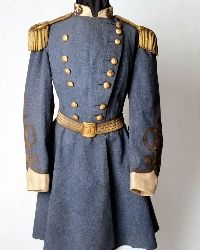Last week was the 150th Anniversary of the Battle at Gettysburg, seen by many as the turning point in the American Civil War. On the fields of Pennsylvania, Major General George Gordon Meade and the Army of the Potomac repelled multiple attacks from General Robert E. Lee’s Army of Northern Virginia. The battle ended Lee’s invasion of the North, sending he and his army back across the Potomac into Virginia. It was the final strategic offensive for Lee’s army, which would ultimately surrender at Appomattox, Virginia on April 9, 1865.
The passing century and a half has done little more than build popular interest in the Civil War. Re-enactments of battles and skirmishes occur on former battlefields throughout the year, year after year, and trade in Civil War memorabilia is more popular than ever. If you collect or trade in Civil War artifacts, or military memorabilia of any era, here are some tips on how best to preserve your relics.
Tips for Preserving Your Relics
• The first step in preserving a uniform is the same as it would be with any article of clothing or piece of fabric being put into storage. You want to make sure it’s as clean as possible. Dirt, dust, and grime can work to break down fabrics over time and can also be attractive to insects and other pests. If possible, have any uniforms you’re preserving professionally dry cleaned or washed appropriately. All metal and/or leather pieces should be cleaned appropriately and everything should be allowed to dry completely before putting the uniform into storage.
• Ideally, clothing should stored laying flat. Garments left on hangers can suffer stress at the seams over time. Use storage boxes designed specifically for archival purposes as they’ll be made of acid-free materials. Use boxes large enough to lay your uniforms flat with as few folds as possible. If acid-free, cardboard boxes aren’t available, use plastic tubs made of polypropylene (type #5). Other types of plastic are more prone to allowing in light, which can yellow garments over time. Never keep any garments in the plastic bags used by dry cleaners.
Store Your Buttons Separate
• Metal buttons and other pieces should be removed and stored separately from the uniform itself. Metal can corrode over time, which would leave stains on the garments.
• Service medals should also be cleaned before going into storage. Use a soft, dry brush to wipe away and dust and dirt. Be careful handling medals as the oils from your skin and the acid in perspiration can cause them to rust. Do NOT wrap medals with rubber bands. Each medal should be wrapped separately in acid-free, archival paper or kept in its original presentation case.
• When choosing a spot in your home for keeping your stored military memorabilia, look for a cool, dry place that isn’t exposed to extremes in temperature or moisture. Keep everything stored out of direct light.
• Inspect everything at least once every six months to one year. Look for any signs of moisture, dirt, grime, staining, rusting or fading. Catching a problem early is the best way to minimize damage.
Servicemen and women and their families should rightly take pride in the service given to their country. Preserving military relics is a wonderful way to reflect on that service and pass the stories and love of country on to generation after generation. Properly maintaining these pieces of history will help ensure those tales can be told for years and years to come.


